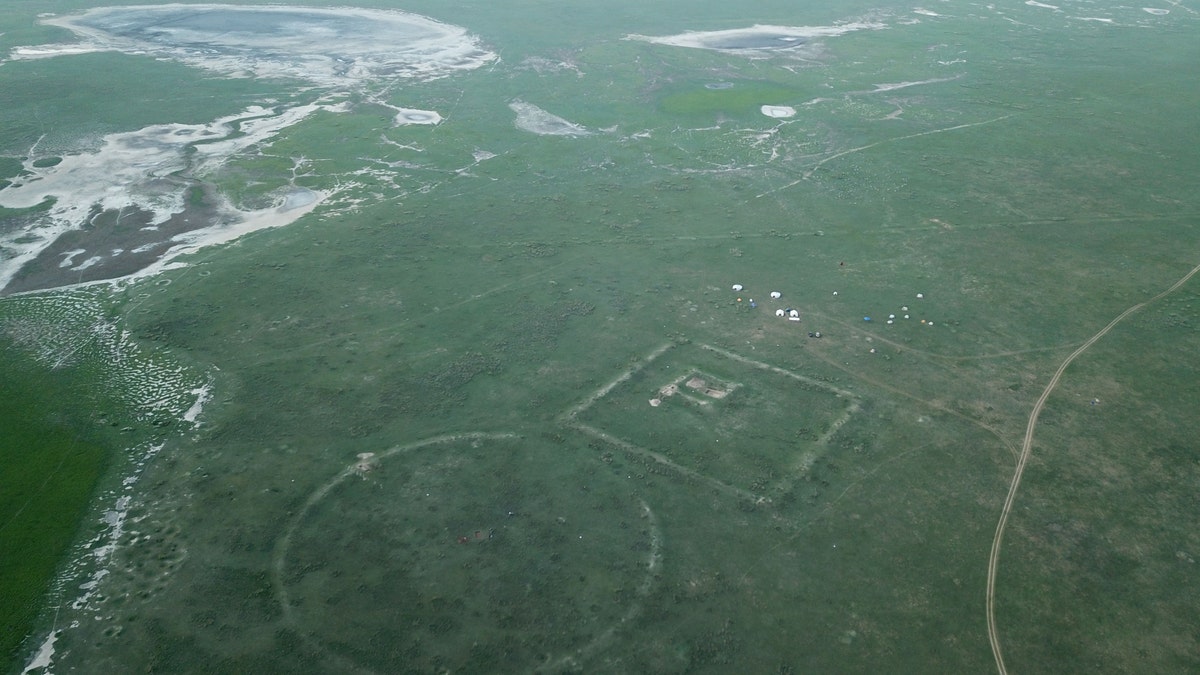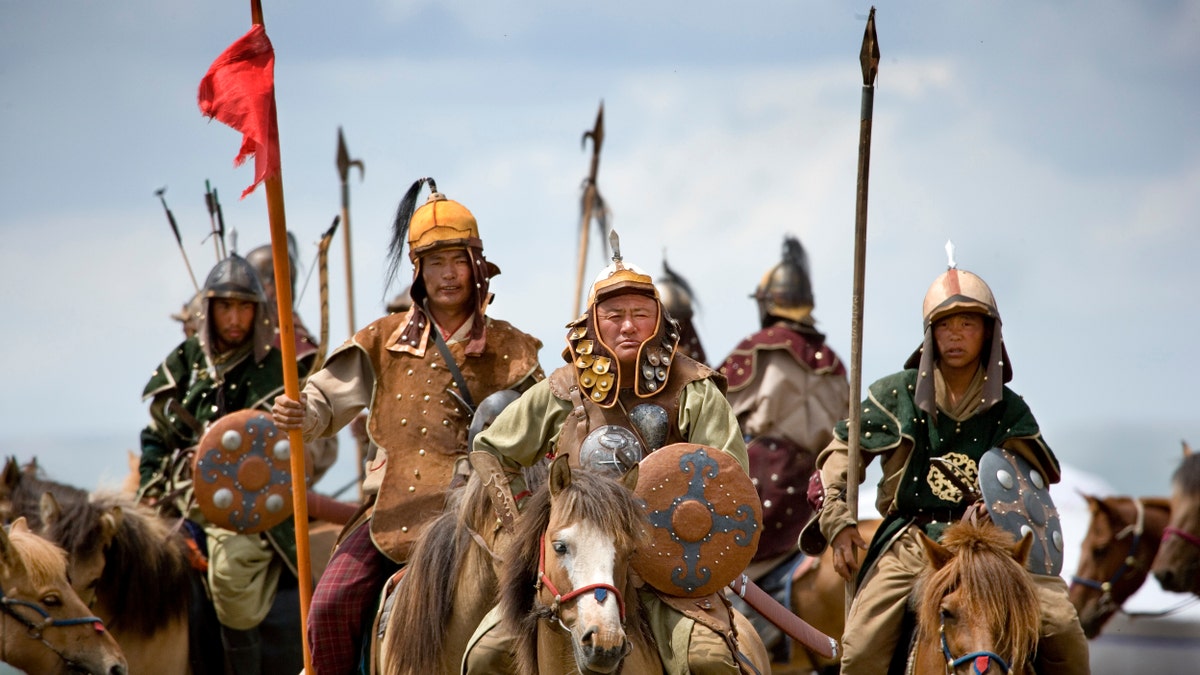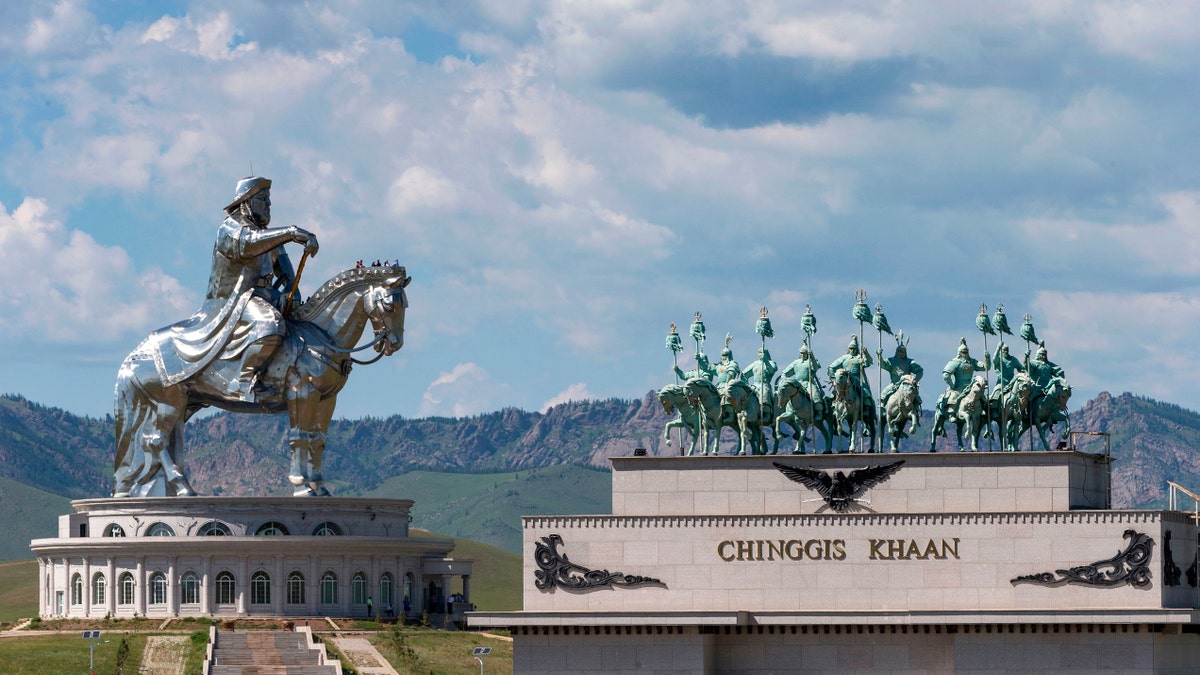Fox News Flash top headlines for June 10
Fox News Flash top headlines are here. Check out what's clicking on Foxnews.com.
For the first time, researchers have fully mapped “Genghis Khan’s Wall,” a 458-mile stretch of the iconic Great Wall located in Mongolia.
“The famous ‘Great Wall of China’ actually consists of several fortifications, built piecemeal between the last millennia BC and the 17th century AD,” explains the Hebrew University of Jerusalem, in a statement emailed to Fox News.
One section of the wall, dubbed “The Northern Line,” is mostly in Mongolia, with some sections in Russia and China, according to experts. This part of the Great Wall was built between the 11th and the 13th centuries, the latter part of which is notable for the rise of Genghis Khan, founder of the Mongol Empire.
RESEARCHERS: GENGHIS KHAN'S PALACE FOUND
Drones were used to provide aerial views of the wall and a detailed survey of a small part of the wall was undertaken.

Aerial view of the wall and forts. (Gideon Shelach-Lavi et al/Hebrew University/Antiquity Journal)
It was previously thought that the section of the wall in Mongolia was built to defend against Genghis Khan and his forces, although the new research reveals that this was likely not the case.
“Our analysis of the wall suggests that it was not built to defend against large invading armies or even against nomadic raids into sedentary lands,” said lead author Gideon Shelach-Lavi of Hebrew University in the statement. “Rather that it was geared to monitor and control the movements of nomadic populations and their herds.”
GENGHIS KHAN OWES HIS EMPIRE TO ... RAIN, SAYS STUDY
“Our study suggests that the assumption that these were all military structures needs to be challenged,” Shelach-Lavi added. “We need to study the structures and their context to better understand the reasons they were built.”

Excavations of the structures were undertaken by archaeologists (Gideon Shelach-Lavi et al/Hebrew University/Antiquity Journal)
The research is published in the journal Antiquity.
Archaeologists worked with experts from Yale University and the Mongolian Academy of Sciences to work out the Northern Line’s primary function.
ANCIENT CITY RULED BY GENGHIS KHAN'S HEIRS REVEALED
The wall’s fortifications are typically not built on high ground, as would be expected for military installations.

Genghis Khan's 800th anniversary Festival of Eurasia. A re-enactment of the unification of the Mongolian tribes under Genghis Khan using 500 cavalry in the uniforms of the 13th century. | Location: Sergelen County, Mongolia - file photo. (Photo by In Pictures Ltd./Corbis via Getty Images)
Archaeologists identified 72 structures along the wall that were organized into small structures built roughly 18.6 miles apart. “This indicates that the wall was likely built in a single, organized phase, likely during the Khitan-Liao Empire,” they explain in the statement.
The Khitan-Liao Empire in East Asia existed from 907-1125 A.D, predating Genghis Khan, who lived from 1162 until 1227 A.D.
TWO 'WARRIOR WOMEN' FROM ANCIENT MONGOLIA MAY HAVE HELPED INSPIRE THE BALLAD OF MULAN

This picture taken on July 16 , 2016 shows the Genghis Khan equestrian statue (the world's largest equestrian statue) in Tsonjin Boldog near Ulan Baator and Erdenet in the Tov province. (JOEL SAGET/AFP via Getty Images)
Genghis Khan, whose name is a title meaning "Ocean Emperor" — united warring tribes to become leader of the Mongols in 1206. After his death, his sons and grandsons expanded his empire until it stretched from China to Hungary.
In 2004, in a separate project, a team of Japanese and Mongolian archaeologists uncovered the site of Genghis Khan’s palace on a grassy steppe 150 miles east of the Mongolian capital of Ulan Bator.
CLICK HERE TO GET THE FOX NEWS APP
Genghis Khan’s tomb, however, remains undiscovered, despite extensive research into its possible location.
The Associated Press contributed to this article.
Follow James Rogers on Twitter @jamesjrogers





















